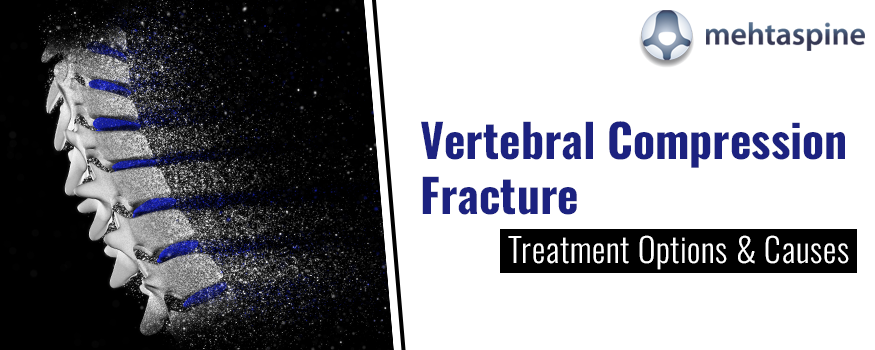Vertebral Compression Fracture Treatment Options & Causes
Vertebral compression fractures are small breaks that occur in the vertebral body of the spine over time. Unlike regular fractures due to injuries, compression fractures occur due to osteoporosis, where the bone tends to get weaker and fragile increasing the risk of damage.
Vertebral Compression Fractures – An Avalanche of Problems:
Compression fractures are silent avalanches that can wreak havoc by drastically reducing the quality of life. These fractures result in loss of vertebral height further leading to forward curvature or hunching. While discomfort is common, in some cases, they lead to nerve compression resulting in pain, numbness, or weakness in legs or arms, sometimes even limiting one’s ability to move.
The first step to avert these problems is to get to know enough to reduce their risk and seek the proper treatment options as soon as possible. With inputs from Mr. Jwalant S Mehta, an expert in deformity corrections in the UK, we delve into the risk factors, symptoms, and treatment options for a vertebral compression fracture in this blog today.
Risk factors for Vertebral Compression Fractures:
Osteoporosis gradually develops unnoticed over the years without any symptoms to finally show up in the form of bone damage or fracture. Because the spine has a higher risk of osteoporosis and woman older age are more prone to suffer from osteoporosis, vertebral compression fractures in elderly women tend to be common (past the age of 50).
In addition to the above, a previous history of spine fractures, medical conditions like rheumatoid arthritis, lifestyle factors like excessive smoking, a sedentary lifestyle, and even long-term usage of certain medications that weaken bones also contribute to its onset.
Early Symptoms of Vertebral Compression Fractures:
Compression fractures most tend to occur in the middle spines leading to thoracic vertebral compression fractures. But they can also occur in any vertebra of the spine, manifesting the following symptoms:
Back pain: Back pain is the most common symptom of a fracture, often originating from the break area. The pain may develop gradually or can show up suddenly during physical movements.
Loss of height: A vertebral body losses its shape and height over time, resulting in loss of overall spine height. The loss of height is a giveaway sign of vertebral compression fracture, but it is common to go unnoticed as the process is gradual.
Postural changes: Loss of shape and height of the vertebrae also results in spine alignment problems, leading to hunched or rounded back, leading to postural changes.
Mobility limitations: Back pain, loss of height, weakened spinal bones, and postural changes decrease overall mobility, making it difficult to perform certain activities.
Treatment for Vertebral Compression Fractures:
The treatment for vertebral compression fractures focuses on managing, relieving the pain, and stabilizing the bone alignment to prevent further complications.
Based on the severity of the condition, spine specialists in the UK design a treatment plan for the compression fracture. Pain relief medications, braces, medications to strengthen bones, and surgical options like vertebroplasty or kyphoplasty. are some of the standard treatment options leveraged by spine specialists to manage and treat vertebral compression fractures in the UK.
If you are living in the UK and seek more information about the treatment of vertebral compression fractures, you can contact Children and Adult Spinal Surgeon Mr. Jwalant S Mehta.


